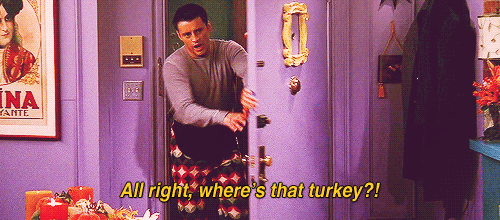
After The Thanksgiving Meal
This Is What Happens To Your Body
Posted: 11/27/2013
We've made countless jokes about our "Thanksgiving pants"
and planned belt unbuckling as we prepare to indulge in a big meal on
Thursday. And, in case you missed it, we've also done our best to calculate the number of calories we might consume if we don't rein it in a little bit. But what actually happens to your system when you overeat during the holidays?
We asked Dr. Jay Kuemmerle, a gastroenterologist and professor of
medicine at Virginia Commonwealth University and Dr. Daniel Hurley, an
endocrinologist and consultant in the Division of Endocrinology,
Diabetes, Metabolism and Nutrition at the Mayo Clinic, Rochester to walk
us through how our bodies really handle the feast before us.
"The main difference that relates to Thanksgiving is the volume and
constituents of the meal," says Kuemmerle. "In large part the high fat
can lead to feeling very full and slower digestion. This can cause the
stomach to expand to a greater degree, which can be uncomfortable."
Uncomfortable how? Well, as the stomach gets more distended from
overeating, the growing pressure is relieved by releasing gas -- that
means some people will experience acid reflux and the urge to belch.
Kuemmerle suggests thinking of the stomach as a balloon: It has some
elasticity, but eventually reaches a breaking point and must relieve
pressure.
Our bodies have a natural stopping point, but the brain is capable of
overriding the stomach's wishes to stop eating. That's particularly
true during a holiday meal, where variety and abundance are prized.
"There's some suggestion that a wide variety of food, like at the
Thanksgiving meal, tends to increase food intake," says Hurley. This is
often referred to as the "smorgasbord effect," according to the Columbia University Press.
Thanksgiving differs from other meals mostly in ritual: The holiday
prizes tradition over digestive mindfulness, hence the problems with
variety and satiety. But in all other ways, the meal looks about the
same to your digestive tract. (Which may be a comment on our abundant
year-round food supply and not this holiday of abundance).
Below, how digestion works -- on Thanksgiving and on all other days:
It turns out the expression "feast your eyes" is pretty dead on. As
soon as you sit down at the table, the sight and smell of the food sends
a signal to the brain and then down to the stomach to prime your
digestive system for the meal, according to Kuemmerle.
That means, at the very first bite, your stomach is primed and ready
to go. "When the first bite of food hits the stomach, it's already
revved up: acid and digestive enzymes have been released," says
Kuemmerle. "The stomach starts to expand to accomodate the meal."
Your mouth plays a role too. "As food is chewed, digestive juice from
the salivary glands starts the digestion," explains Hurley. "The teeth
involved in mastication break down the food into protein, carb, fat and
then in the stomach, breakdown continues."
As you eat, your stomach stretches and secretes acid and digestive
enzymes to help digest the food. Once you get to a point where your
stomach feels full, stretch receptors -- a collection of sensory nerves
in the stomach -- send messages to the brain to tell it that it's time
to stop eating.
Again, this is where your brain can really misguide your body. "When
we eat, ghrelin -- the hormone that stimulates back to brain to say I'm
full or I'm hungry -- increases and activates the hunger or satiety
centers in the hypothalamus of the brain," explains Hurley. "But your
central nervous system can override the hypothalamus -- it's the same
reason we can stay awake, even if our brain is telling us we're tired."
Once your body determines fullness, the stomach grinds the food down
into two to three millimeter pieces -- small enough to fit into the
small intestine. As the stomach does this, it begins to contract and
reestablish its tone, while pushing the ground up matter and digestive
liquid through the pylorus and into the duodenum, which is the upper
part of the small intestine.
This process can be slowed, depending on what you ate. "A high fat
meal with gravy and butter delays emptying of the stomach because fat is
harder to digest," says Kuemmerle. In other words? Your stomach's
ability to efficiently process its contents may rely on how much butter
your Aunt Mable put in those mashed potatoes. This can delay stomach
emptying, which is an important step of digestion because the food's
presence in the small intestine signals the release of important enzymes
from the pancreas and galbladder. These pancreatic enzymes and bile
help to digest carbs and proteins and emulsify fats, breaking the food
down into amino acids and simple sugars to be absorbed into the blood
stream.
Of note, Hurley explains, our metabolism can actually increase if we
eat too much to help with digestion, which requires energy. But don't
get too excited, he says, "it's not enough to overcome the calories we
don't need -- it's just enough to help us."
The release of sugar in the blood stream triggers insulin, the
hormone responsible for regulating blood sugar. Insulin and another
hormone glucagon will store some sugar in the liver as glycogen (some
fat is also stored in the liver). Every cell of your body requires
glucose and muscles also requires a store of glucogen. What the body
doesn't use for these functions will be sent to fat tissue to be stored
as fat -- either subcutaneous fat or abdominal visceral fat.
As the digested material hits the end of the small intestine,
specific vitamins get absorbed, bile gets reabsorbed and hormonal
signals are sent to the brain.
Next, the body performs a really fascinating self-cleaning maneuver:
As the matter continues into the colon (where water is reabsorbed and
some additional nutrients are absorbed, according to Kuemmerle), the
interdigestive period begins. All of the "indigestible material" -- the
detritus that didn't make it through the first time -- gets pushed
through. The pylorus opens widely and the bigger stuff gets swept into
the colon. A gallbladder contraction allows the pancreatic duct to get
cleaned out. It is, Kuemmerle explains, a form of housekeeping to prep
the body for the next meal.
"While the [conscious] brain is involved in chewing and swallowing and 'starting' the machinery," says Kuemmerle. "The vast number of functions occur in the GI tract without us being able to regulate or be aware of it."
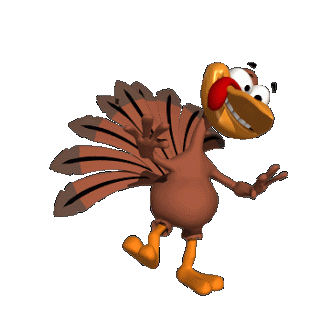
And here you thought you were just sitting on the couch.

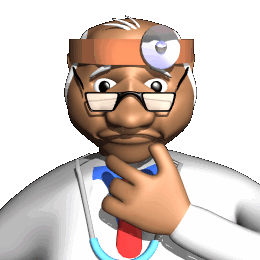

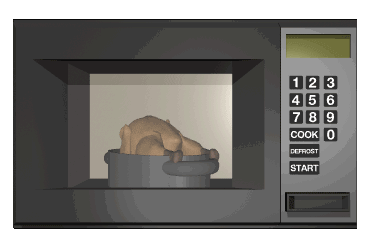

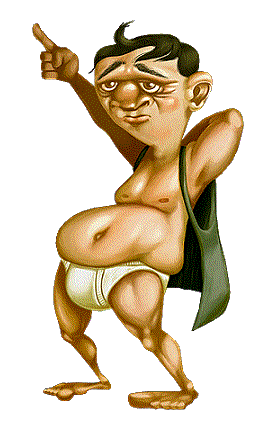
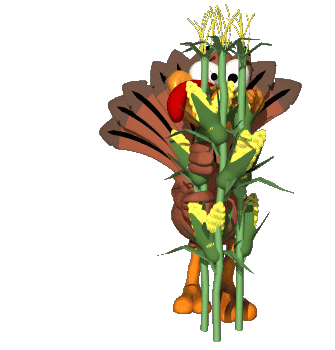
No comments:
Post a Comment